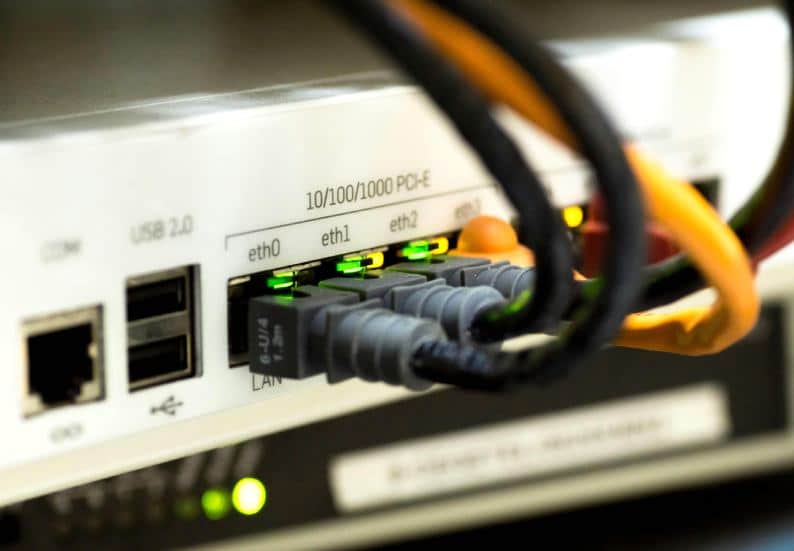Words by Al Woods
In an era where digitalization is redefining the fabric of the workplace, the question is no longer whether businesses should adapt to emerging technologies, but how quickly they can. The backbone of this transformation is robust Internet solutions—a complex network of technologies that continues to evolve in terms of speed and reliability. With the stakes higher and competition fiercer than ever, businesses are leveraging innovations like ultra-reliable fiber optic internet, 5G and edge computing to secure their place in the digital marketplace. Here, we explore how Internet solutions that underpin the enterprise landscape are reshaping it.

Super reliable fiber optic internet
Businesses that operate under the philosophy that “good enough” is enough have fallen behind.So, in the words of professionals Bright wave optical fiber, having ultra-fast, ultra-reliable fiber optic internet backed by excellent local customer support is essential. By contrast, those who understand the true potential of fiber optics are moving forward at a rapid pace. This form of internet connection, which uses pulses of light to transmit data, offers unparalleled speed and reliability. This is critical not only for maintaining unfettered workflow internally, but also for delivering a superior customer experience in a world that demands instant gratification.
Imagine a scenario where high-definition video conferencing was not affected by lag or jitter. Imagine the huge leap in productivity when businesses can seamlessly upload and access large files in seconds instead of minutes. Fiber optic internet paves the way for cloud applications that are as responsive as those running on local servers, speeding up processes that might otherwise be a bottleneck due to weaker connections. For businesses, investing in fiber optic internet isn’t just about staying relevant; it’s also about staying competitive. It aims to lead people towards a future of unlimited digital capabilities.
However, the benefits of fiber optics go beyond speed; it is also the cornerstone of technologies such as the Internet of Things (IoT), artificial intelligence and machine learning, all of which rely on consistent and strong connections. As the business environment becomes increasingly data-dependent, fiber optic internet is no longer a luxury but a necessity that defines the success and efficiency of modern operations.
Edge computing and its impact
With the proliferation of connected devices and the volume of data, traditional cloud computing models are facing new challenges. Edge computing offers a solution that brings computing processes closer to the source of data generation rather than relying on distant data centers.
The impact on business is significant. Edge computing can reduce latency, which is especially important for applications that require immediate processing, such as IoT devices in manufacturing. It also minimizes the need for large-scale data transfers, thereby reducing the burden on network bandwidth. This means real-time data analysis, instant response times, and a smoother customer experience.
For example, in e-commerce, edge computing can almost instantly personalize website experiences based on customers’ browsing behavior, thereby increasing sales and customer satisfaction. In the case of self-driving cars, edge computing enables split-second decisions that can potentially save lives.
Enterprises adopting edge computing must not only meet current real-time processing needs, but also be flexible enough to respond to future technological changes. This is a new frontier for business internet solutions – an environment where data can not only be processed quickly, but insights can be gained immediately and acted upon effectively.
5G Technology: A Game Changer for Connectivity

The advent of 5G technology promises to revolutionize the way we think about internet connectivity. 5G can be several times faster than 4G, and its potential extends far beyond faster download times for mobile users. The leap in connectivity is critical for businesses, especially those in industries such as telemedicine, virtual reality and mobile gaming, which have long been eager to increase network speeds to realize their full potential.
5G’s low latency and high capacity will enable more devices to connect smoothly, enhancing the ecosystem of connected devices that form the Internet of Things. In a manufacturing environment, fast data transfer between machines can be the difference between delayed operations and maximum efficiency.
The impact of 5G also extends to the increasing prevalence of remote working. With high speed and low latency, 5G makes remote collaboration nearly as smooth as in-person interactions, bridging the gap between workers onsite and offsite. This level of connectivity heralds a new era of flexibility and productivity in the labor market.
Emerging technologies in Internet solutions are not just about keeping up with digital developments, but about creating new avenues for growth and innovation. Whether through ultra-reliable fiber optic internet, edge computing or 5G, businesses of all sizes are looking for ways to use these technologies to their advantage.